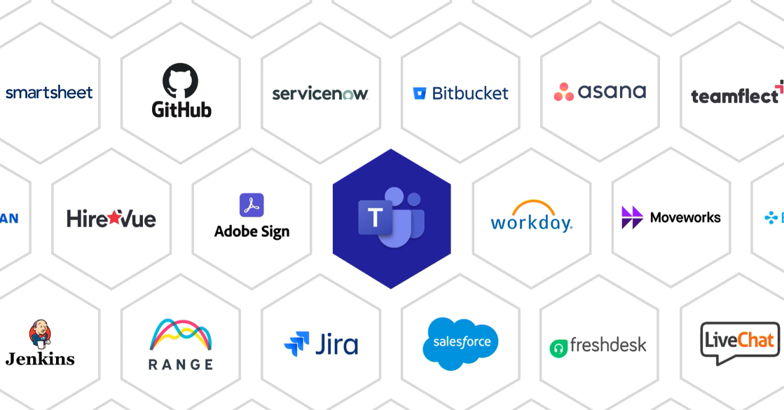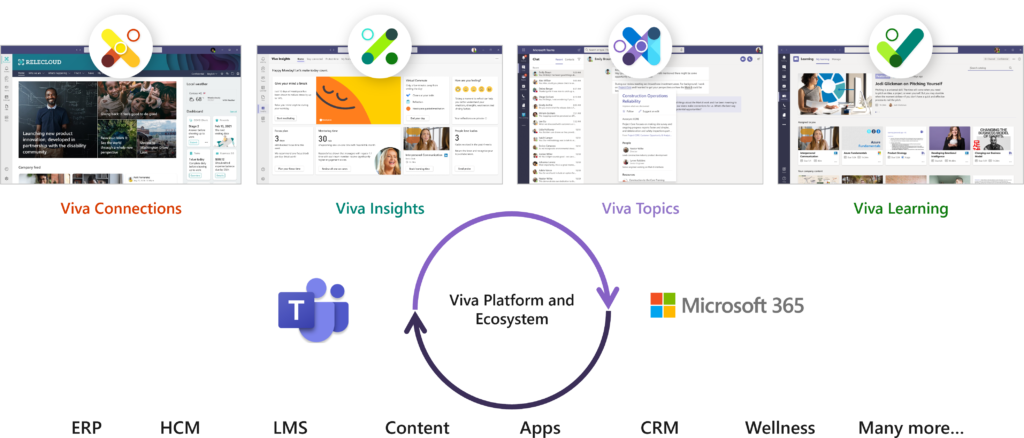
Published 27 January 2022
Each year seems to be defined by a key word or phrase – in 2021, that phrase was hybrid work. Whether you tuned into a webinar, read a thought leadership article, or trawled through the latest research, there it was (and still is) loud and clear- hybrid work is here to stay. We get it. People like flexibility, they want choice about where and how they work. But how exactly do organisations fulfil the promise of a hybrid working culture? The answer lies in embracing hyper-connectivity, which we’re calling the biggest and most interesting trend of 2022.
The conditions have never been riper to design a hyper-connected digital experience; one that reduces silos, supports greater collaboration and knowledge sharing across people and systems. So, what is hyper-connectivity? And how can organisations get started? Keep on reading to find out how.
What is hyper-connectivity?
Last year, Satya Nadella spoke about five key trends that we’ll see over the next decade. One of those trends was the notion of hyper-connectivity, where organisations can benefit from more meaningful integrations between disparate systems, consumers and businesses. In short, we see hyper-connectivity as bringing information and data to people, rather than people having to source that information themselves. A big part of making this trend a reality is Microsoft’s announcement of a bunch of new partnerships and native integrations with popular software vendors, like ServiceNow, Go1, Glint and many others.
One of the best examples of hyper-connectivity in action – personalised dashboard cards in Viva Connections
While cross-platform integration is nothing new, historically the integrations between third-party systems have been superficial, limited in capability, and often only applicable to very specific processes or tasks. But that’s now being turned on its head, with new functionality (like live components in Teams) adding an extra dimension to what’s possible across platforms. These updates have the potential to tackle some common challenges, like siloed applications or duplication of effort, and reduce confusion around which tool to use when. The announcement of more native third-party integrations also means businesses can start to mature the use of core collaboration tools, like Microsoft Teams, beyond the simple chat and meeting functionality, to one that supports complex processes and asynchronous collaboration.
The big players are all getting involved
In 2021, we also saw some really interesting innovations across software vendors, including Microsoft, ServiceNow, Workday, LiveTiles and many others, as they look to fulfil the promise of the ‘work from anywhere’ culture. For the first time in a while, the big players are joining forces for the ‘greater good’. Many of the problems facing organisations today, like too many manual processes, shadow IT, reduced staff engagement, are likely to become a thing of the past, as hyper-connectivity becomes a staple across large software vendors.

Just some of the partnerships announced at Ignite 2021
Hyper-connectivity in action
Some of the best examples of hyper-connectivity in action include:
Surface personalised and targeted content across third-party platforms through Viva: Viva is Microsoft’s new Employee Experience platform – designed to improve employee communications, support learning, wellbeing and knowledge sharing across platforms. The great thing about Viva is some of it is already available to use within your existing M365 subscription. One of the best features available out-of-the-box includes the Viva Connections Dashboard cards which allow you to seamlessly present personalised and targeted content (e.g. overdue tasks, mandatory learning etc.) to users directly in SharePoint and Teams. Best of all, this feature is mobile-friendly meaning it’s a potential game-changer for organisations with frontline workers. We see Connections as the future of intranets. Check out Rachel’s blog on Viva Connections, or Sam’s blog on Viva Learning for more on this.

Viva – the new employee experience platform for Microsoft 365
The ability to edit content across apps in real-time with the fluid framework: Late last year, Microsoft announced the launch of Loop, a new app designed to help people think, plan and create together across M365 apps. This is exciting because we are finally getting a taste of the ‘fluid framework’ in action by demonstrating how simple it is to collaborate across the traditional boundaries of an app (for example, updating a Loop component in real-time, in a Teams chat).

Real-time collaboration on a Loop component within Teams
Native integration of more third-party apps in teams: Last, but certainly not least, is Microsoft’s announcement of a bunch of new partnerships, all designed to help you design more seamless employee experience through collaborative apps. These apps can be embedded directly into Teams or you can integrate components (e.g. details from a Jira board) into chats, emails or meetings. Not only does this help reduce context switching, it also helps remove information silos between systems, helping break down barriers and improve the flow of knowledge across your business.
Where to from here?
It’s by no means perfect but these are some of the biggest and most exciting changes we’ve seen in a long time. Best of all, many of these capabilities are available to you today, within your existing M365 subscription. Tie these new capabilities with a change & adoption campaign focused on ways of working and bobs your uncle, you’re into a winner! (hint: we can help with that!)